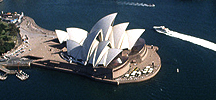How will the ASX, Wall Street, other share markets and the Australian dollar perform in 2024?
Key market and currency watchers say the Australian share market is likely to outperform other major financial markets in 2024 and the Australian dollar will trade higher against the greenback with or without interest rate cuts.
Key points:
· The ASX 200 could reach a record high in 2024
· The Australian dollar is likely to continue to rise
· But a recession is not ruled out as economic uncertainty lies ahead
The Australian share market largely underperformed relative to other markets around the world in 2023.
The Australian Stock Exchange (ASX) rose in the year, but much less compared to US indices such as the Dow, the S&P 500 and, particularly, the tech-heavy Nasdaq Composite.
But analysts say there is a good chance of an outperformance for the ASX this year.
The end-of-2024 forecast for the ASX 200, S&P 500 and Australian dollar
AMP forecasts the ASX 200 will end the year at 7,775 points, returning 9 per cent in 2024 with dividends included, and the S&P 500 will reach 4,950 points.
Tribeca Capital expects the ASX 200 to reach 8,200 points (about 10 per cent growth excluding dividends) and the S&P 500 to surpass 4,900 points.
While NAB predicts the Australian dollar will trade about 73 US cents by the end of 2024, Betashares thinks it could go even higher, reaching 75 US cents, as the greenback is expected to continue to moderate.

Jun Bei Liu manages more than $800 million in funds and assets at Tribeca Capital.(ABC News: John Gunn)
"I expect the ASX to outperform the US market as resources and industrial sectors outperform growth sectors," Tribeca Capital's portfolio manager Jun Bei Liu told the ABC.
"China's return to GDP growth will be the key driver of the consumption for commodities as well as strength for the Australian dollar.
"Cheaper valuation for the Australian market is also another key reason for its expected outperformance."
Betashares chief economist David Bassanese says another reason for an outperformance could be that "large-cap US technology stocks have become relatively expensive".
AMP chief economist Shane Oliver agrees with the likelihood of an outperformance for the ASX, but with a caveat.

AMP chief economist Shane Oliver warns a recession is a key risk that could derail expected gains on the ASX.(ABC News: John Gunn)
"Australian shares are likely to outperform global shares once dividends are allowed for, after underperforming in 2023, helped by somewhat more attractive valuations and, later in the year, easing concerns about Chinese growth and the Australian consumer," he told the ABC.
"A recession could threaten this though."
In fact, Dr Oliver's forecast bakes in a 10 per cent correction along the way, taking the ASX 200 to a low about 6,700 before it rallies to a record high later in the year.
Likewise, for the Australian dollar, Dr Oliver can see a low of about 64 US cents, before ending the year about 72.
What will drive financial markets and currencies in 2024?
The Chinese economy, interest rates, geopolitics and corporate earnings are likely to be the big drivers for the Australian and major global share markets and the Australian dollar in 2024, according to the analysts.
"If China turns around quickly, as we saw in the early part of 2023, we are likely to see meaningful uplift for the Australian market and the Australian dollar," Ms Liu said.
The Chinese economy is on track to meet the government's 2023 growth target, reflecting the post-COVID recovery, but it has been slowing down significantly over the years.
Real GDP is projected to grow by 5.4 per cent in 2023 and slow to 4.6 per cent in 2024 amid continued weakness in the property sector and subdued external demand, according to the International Monetary Fund (IMF).
Central banks around the world have been taming inflation by hiking interest rates, and it appears to be working.
Global equities rallied in December on hopes of falling borrowing costs in 2024.
Although, historically, share markets tend to fall after central banks start cutting rates, according to National Australia Bank's Gemma Dale, because it is associated with a deteriorating economy and worsening trading conditions.

Nabtrade director Gemma Dale says Wall Street rallies on hopes of rate cuts in 2024.(ABC News: John Gunn)
"At present, US [and other] markets are rallying on potential cuts but this seems very optimistic on historical trends," she told the ABC.
"Our expectation is that the US [and Australian] economy will soften, which will lead to falling company earnings that are not currently priced into equity markets that continue to hope for a [very] soft landing.
"For the AUD [Australian dollar], the Fed is likely to drive the USD lower while the RBA may take a 'higher for longer' approach, putting a floor under the AUD and some upward pressure."
Recession still on the cards
Risks for both share markets and currency markets remain elevated, according to the analysts.

David Bassanese manages more than $33 billion in funds for more than a million customers at Betashares.(ABC News: Dan Irvine)
"On the upside is a strong Chinese economic recovery. On the downside is a global recession," Mr Bassanese said.
Dr Oliver thinks the main downside risks are sticky inflation, a weaker Chinese economy and geopolitical tensions.
"Inflation could prove sticky, which would lead to more central bank rate hikes globally and the global and Australian economies could slide into a deep recession.
"The Chinese economy could weaken sharply and various geopolitical events ranging from the Taiwanese election and a possible US government shutdown in January to the US presidential election in November [could affect markets]."
On the other hand, he said falling inflation, lower interest rates and stronger-than-expected growth could push share markets and the Australian dollar higher than what AMP was currently forecasting.
Ms Dale said the biggest risks to the ASX were the outlook for financials and materials.
"There is concern with financials that banks have reached peak profitability and that, as higher rates start to bite and the economy weakens, delinquencies will rise," she warned.
"This was also the concern coming into 2023. And was evident in bank share prices through [2023], which were pretty flat until the most recent rally.
"Materials have not benefited from the much-hoped-for China reopening, but the size of investment in renewables as a result of the [US] Inflation Reduction Act is giving rise to hopes of a new commodity boom, despite recent falls in lithium prices.
"NAB's biggest concern for the AUD is the return of US exceptionalism — if there is a substantial deterioration in the global outlook, USD may again be the 'safe haven' currency and get more support than expected."
Will the RBA and other major central banks start cutting interest rates?
The Reserve Bank in its latest meeting minutes revealed that it considered another rate hike in the December policy meeting but decided to keep rates on hold at a 12-year high of 4.35 per cent.
WATCH
Duration: 4 minutes 6 seconds4m 6s

Market predicts two interest rate cuts in 2024
That was largely to try to avoid the possibility of a larger rise in the unemployment rate down the track.
Underlying inflation in Australia was still higher than in several other similar economies, the RBA warned, adding that there was a risk of inflation taking longer than expected to fall to its target of 2.5 per cent.
While the market is betting that the interest rates have peaked in Australia, NAB believes there is still a 50:50 change of one more rate increase before any rate cuts later in 2024.
"That's a pretty moderate approach relative to expectations in the US, where rates were increased earlier and are currently higher, but the market is pricing in earlier and more aggressive cuts. That will support the AUD," Ms Dale said.
Dr Oliver expects several major central banks to start cutting rates in the first half of 2024, including the European Central Bank (around April), the US Federal Reserve (around May), the Bank of England (around June) and the RBA (also around June).
"Shares may not respond positively initially to central bank rate cuts because economic activity is also likely to be weak initially but will benefit through the second half of the year as rate cuts ultimately drive expectations of stronger growth ahead," he said.
However, Ms Liu holds a different view when it comes to rate cuts.
"Our base case is no rate cut [in Australia] next year, however, even the discussion of possible rate cuts will drive markets higher," she said.
"Australia will be behind the US in terms of rate cuts. This should underpin a strong Australian dollar."








